Who We Are
Geospatial data and analysis is critical for conservation, from planning to implementation and measuring success. Every day, mapping and spatial analysis are aiding conservation decisions, protected areas designation, habitat management on reserves and monitoring of wildlife populations, to name but a few examples. The Geospatial group focuses on all aspects of this field, from field surveys to remote sensing and data development/analysis to GIS systems.
How to Get Started
Want to learn more about how remote sensing is used in conservation? Check out the first two episodes of this season of Tech Tutors, where our Tutors answer the questions How do I use open source remote sensing data to monitor fishing? and How do I access and visualise open source remote sensing data in Google Earth Engine? You can also check out our Virtual Meetup Archive for a range of panels that overlap with Geospatial topics, or take a look at our Earth Observation 101 lecture series from Dr. Cristian Rossi.
Our Purpose
The WILDLABS Geospatial Group is for conservation practitioners, geospatial analysts, and academics that want to:
- Share geospatial resources, best practices, data, and ideas;
- Network amongst geospatial and data practitioners;
- Create peer learning opportunities;
- Promote the use of free and open-source geospatial software; and
- Improve the use of GIS software and geospatial analyses in conservation management and research.
Group curators
3point.xyz
Over 35 years of experience in biodiversity conservation worldwide, largely focused on forests, rewilding and conservation technology. I run my own business assisting nonprofits and agencies in the conservation community



- 7 Resources
- 69 Discussions
- 12 Groups
- @ahmedjunaid
- | He/His
Zoologist, Ecologist, Herpetologist, Conservation Biologist





- 75 Resources
- 7 Discussions
- 16 Groups
Fauna & Flora
Remote Sensing Scientist, Conservation Technology & Nature Markets @ Fauna & Flora - WILDLABS Geospatial Group Co-Lead



- 42 Resources
- 49 Discussions
- 9 Groups
No showcases have been added to this group yet.
- @jonesen2
- | she/her
- 0 Resources
- 0 Discussions
- 4 Groups
- @tehreemafzal
- | Tehreem
Zoologist, Researcher
- 0 Resources
- 0 Discussions
- 1 Groups
- 0 Resources
- 0 Discussions
- 4 Groups
WildAid
Surveillance and enforcement of marine protected areas.
- 0 Resources
- 2 Discussions
- 5 Groups
Fauna & Flora
GIS & Remote sensing technical specialist at Fauna & Flora



- 0 Resources
- 15 Discussions
- 6 Groups
- @Arjun_Viswa
- | S
- 0 Resources
- 0 Discussions
- 26 Groups
- @Johnolang
- | Him/he
Holds a master's degree in Water and Sustainable Development - Limnology and Wetland Management from IHE Delft Institute for Water Education, Netherlands.
- 0 Resources
- 1 Discussions
- 7 Groups
- @bcknr
- | He/Him
- 0 Resources
- 0 Discussions
- 6 Groups
3point.xyz
Over 35 years of experience in biodiversity conservation worldwide, largely focused on forests, rewilding and conservation technology. I run my own business assisting nonprofits and agencies in the conservation community



- 7 Resources
- 69 Discussions
- 12 Groups
- 0 Resources
- 0 Discussions
- 12 Groups
- 0 Resources
- 0 Discussions
- 18 Groups
- @mjwethin
- | He/Him
Quantitative Ecologist
- 0 Resources
- 0 Discussions
- 4 Groups
Careers
The Pike County Conservation District (PCCD) is accepting applications for a full-time Resource Conservationist.
21 August 2025
Careers
TreePeople mobilizes individuals, families, communities, philanthropists, and public agencies to work together to create green, resilient communities.
21 August 2025
Link
Hi Folks, Here is a set of introductory tutorials for QGIS, compiled by Statistics Canada. The tutorials are thoughtfully put together and easy to follow—great resource for learning QGIS, a free and open-source...
18 August 2025
LiDAR
17 August 2025
Key Biodiversity Areas.
11 August 2025
Read about the advice provided by AI specialists in AI Conservation Office Hours 2025 earlier this year and reflect on how this helped projects so far.
6 August 2025
Link
The RCoE Geoportal provides comprehensive forest datasets that can help governments, researchers, and conservationists make informed decisions. From deforestation trends to forest cover analysis, these datasets offer...
5 August 2025
Link
There are a number of publicly available ‘open’ datasets and products from government sources, research and civil society initiatives, as well as closed offerings from commercial service providers. Find out more if...
5 August 2025
GFC 2020 maps global forest cover as of Dec 2020, updated in 2024 with new data. It is meant to aid in EUDR risk assessment but has no legal value per se but may be used to comply with the Regulation on deforestation-...
5 August 2025
AlphaEarth Foundations
2 August 2025
PASTIS (R package).
31 July 2025
RNeXML (R package).
31 July 2025
September 2025
October 2025
event
November 2025
event
event
March 2026
February 2025
event
January 2025
event
December 2024
event
November 2024
event
131 Products
Recently updated products
| Description | Activity | Replies | Groups | Updated |
|---|---|---|---|---|
| I’m over in New York City for Geo for Good this week and wondered if anyone else in the community is there? Would be lovely to say hi if so. |
|
Geospatial | 2 days 19 hours ago | |
| Very interesting. Thanks for sharing |
|
Geospatial, Conservation Tech Training and Education, Early Career, Earth Observation 101 Community | 1 week ago | |
| We're going to try it for a NatCap assessment this year, but no previous experience with it. |
|
Geospatial, Software Development, Climate Change, Funding and Finance, Marine Conservation, Open Source Solutions | 1 week ago | |
| want to join 2025 contest for humpback whale photos in Juneo Alaska of Kelp |
|
Citizen Science, Conservation Tech Training and Education, Drones, Emerging Tech, Geospatial, Human-Wildlife Coexistence, Marine Conservation, Open Source Solutions | 1 week 6 days ago | |
| This is awesome!! |
|
Conservation Tech Training and Education, Drones, Emerging Tech, Geospatial, Open Source Solutions | 2 weeks ago | |
| Would be interested to learn more! What data, software and tools are you using to build your models? |
|
Climate Change, Geospatial | 3 weeks ago | |
| Hi Olivier! I'm Alex from the WILDLABS community team. Thank you for sharing EcoTeka! I made a page for it on The Inventory, our wiki-style database of conservation technology... |
|
Geospatial | 3 weeks 2 days ago | |
| Wow this is amazing! This is how we integrate Biology and Information Technology. |
|
Camera Traps, AI for Conservation, Build Your Own Data Logger Community, Data Management & Mobilisation, Marine Conservation, Protected Area Management Tools, Geospatial | 4 weeks 2 days ago | |
| Good question. Not sure everyone recommends ArcGIS anymore, but it is commonly used as a desktop GIS. However, it's not free. QGIS, R, and various Python packages are free. But... |
|
Citizen Science, Geospatial, Human-Wildlife Coexistence | 4 weeks 2 days ago | |
| Very interesting! Thanks for posting this. I found the NASA ARSET Tutorial quite useful for an overview on PACE before delving into the data. Highly recommend it if you're new to... |
|
Geospatial, Latin America Community | 1 month ago | |
| Wow great effort everyone! We wouldn't have been able to have such a successful group without all our members and our wonderful speakers @LeanneTough , Dr Kuria Thiongo, @... |
|
Geospatial | 1 month ago | |
| 15 years ago I had to rebuild the dams on a game reserve I was managing due to flood damage and neglect. How I wished there was an easier,... |
|
Drones, Conservation Tech Training and Education, Data Management & Mobilisation, Emerging Tech, Geospatial, Open Source Solutions | 4 months 1 week ago |
Deliver stronger VM0047-aligned Nature-Based Solutions
31 January 2025 9:30am
Collaring elephants and post-release monitoring
29 January 2025 8:18am
Collaring Elephants and Post Release Monitoring
28 January 2025 3:16pm
Help Shape the Future of the WILDLABS Geospatial Group!
7 December 2024 2:43pm
27 January 2025 8:24pm
We're extending the survey deadline! Please don't forget to let us know if you would like to speak about your work at one of the future Geospatial community events.
Many thanks!
Updated Planted Trees Map Reaches Near-Global Coverage
25 January 2025 4:41pm
New Data Provides First Global Annual Picture of Cultivated and Natural Grasslands
25 January 2025 2:22pm
Can/Should UAVs Be The Answer To Urbanisation & Wildlife Conflicts
20 January 2025 11:00am
Impact of Wildfires on Land Surface Cold Season Climate in the Northern High-Latitudes: A Study on Changes in Vegetation, Snow Dynamics, Albedo, and Radiative Forcing
19 January 2025 12:08pm
BIOSPACE 2025
Nature Tech Unconference
Drone specific GIS training online for Conservationists
9 January 2025 11:12am
EARTHVISION 2025
Postdoc on camera trapping, remote sensing, and AI for wildlife studies
15 January 2025 4:53pm
GIS Simplified
Fellowship Opportunity: Planet Labs and Taylor Geospatial Institute 🚀
11 January 2025 5:37pm
DeepForest Code Walkthrough - Airborne Machine Learning for Biodiversity Monitoring
6 January 2025 3:24pm
Recommended Hardware to stitch together Drone Imagery into Orthomosaics
25 November 2024 6:25am
21 December 2024 5:21am
This site may be of use for WebODM and photogrammetry using UAVs, as it focuses purely on processing that type of data and the hardware required. It also covers Conservation and Agriculture analysis and training using open source GIS and 3D point cloud software. Follow the links below:
https://www.geowingacademy.com
Hope this helps.
3 January 2025 3:41am
Hi @willrippon, I've worked with 3D reconstruction systems (software and hardware) for over 10 years now, and lately I've been really pleasantly surprised by Pix4D.
Here is a demo for a landscape survey my company just did.
Here is a 300 MB orthomosaic we just got as well.
Here is the hardware workflow described in detail.
On top of the drone imagery, we did "post-processing kinematics" (PPK) of the drone images (a very important thing to do, otherwise photogrammetry quality really suffers). I'm happy to discuss workflow further, and plan to release open source code and services.
If nothing else, go with Pix4D.
6 January 2025 7:40am
Thank you David, a phenomenal source!
Photogrammetry of Coral Reef Breakwaters
20 December 2024 1:11am
22 December 2024 8:35am
Hi Matthew
Wow, what an amazing project! It is incredible how you have managed to figure out some of the complexities of combining underwater imagery with UAV imagery. I am sure that was a fascinating learning experience.
I cannot help you with Points 1 and 3 but can suggest using Orfeo Toolbox for your segmentation process in Point 2. It integrates with QGIS and is open source. It will work with your UAV ortho maps if there is enough visible detail of the corals. You will be able to build and train your own model in order to accurately segment you reef. It takes a bit of know how to us the Machine Learning algorithms but once you get the hang of it it becomes immensely powerful. I will be building an online course on how to build your own machine learning processing algorithms in 2025 using this brilliant package. Once segmented you can save out the shapefiles and use them to segment and define your 3D point clouds in Agisoft.
Alternatively, look into using Picterra Geospatial AI. It is cloud based and much simpler to use but you may need to compress your imagery or point clouds in order to upload them given the file size you mentioned above. (Although they probable do allow for large uploads these days, I used Picterra in the past and it was brilliant!). Also i am not sure if it works with point clouds directly but have a look
I hope this helps. Great project!
Postdoc on camera trapping, remote sensing, and AI for wildlife studies
18 December 2024 2:14pm
FEISTY Fortran library and R package to integrate fish and fisheries with biogeochemical models
Query Regarding ArcMap
15 November 2024 2:21pm
12 December 2024 1:19pm
Sure
12 December 2024 1:20pm
I'll see that but I actually prefer ArcMap so that's why
12 December 2024 1:22pm
Thankyou so much. I'll definitely apply these solutions


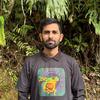




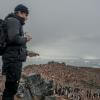



























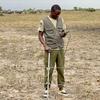
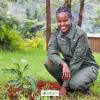



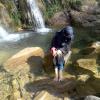
7 January 2025 5:49pm
Happy New Year Geospatial community! Don't forget to fill in the survey. Closing date is 19th January.
We'd love to hear from you!